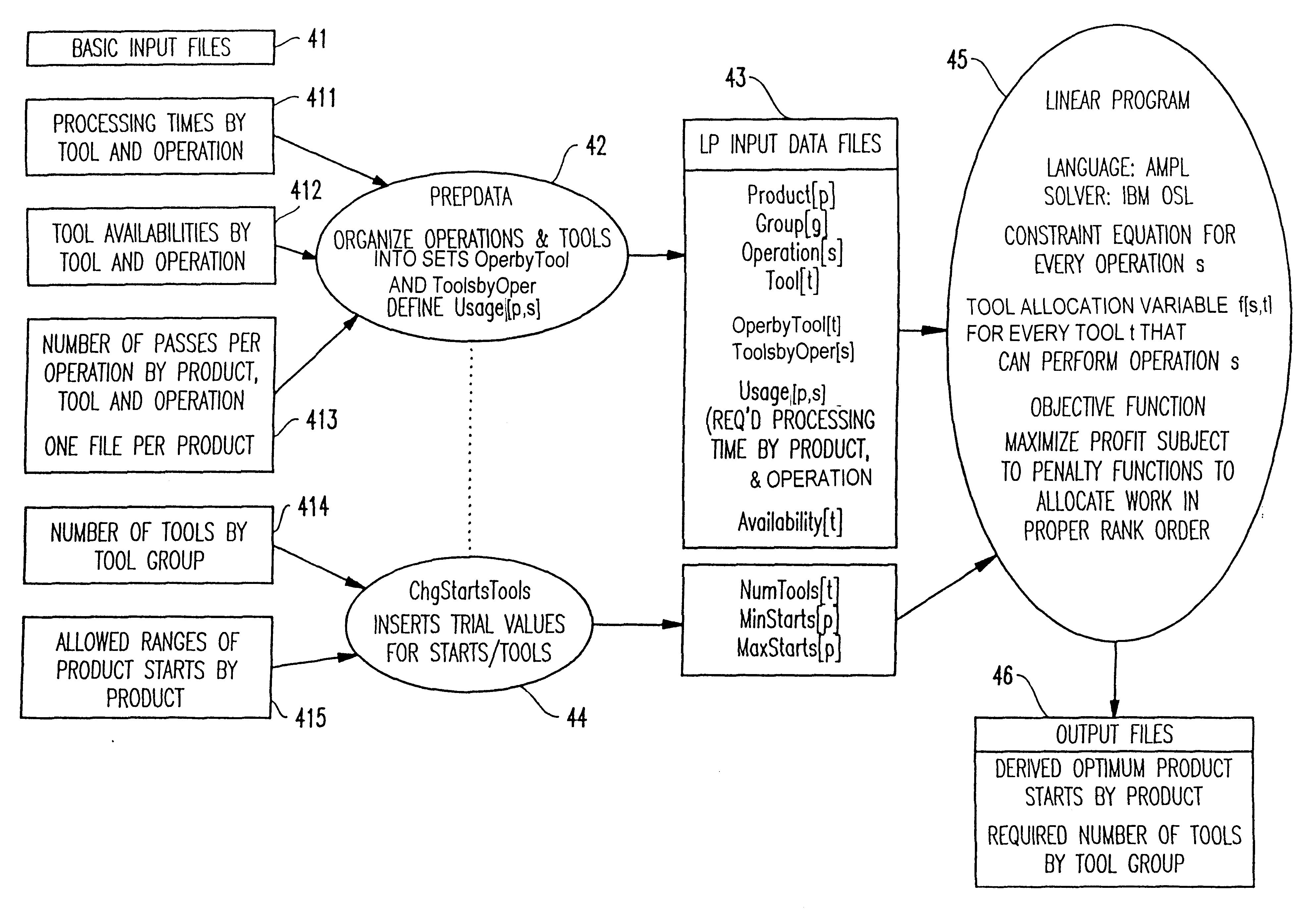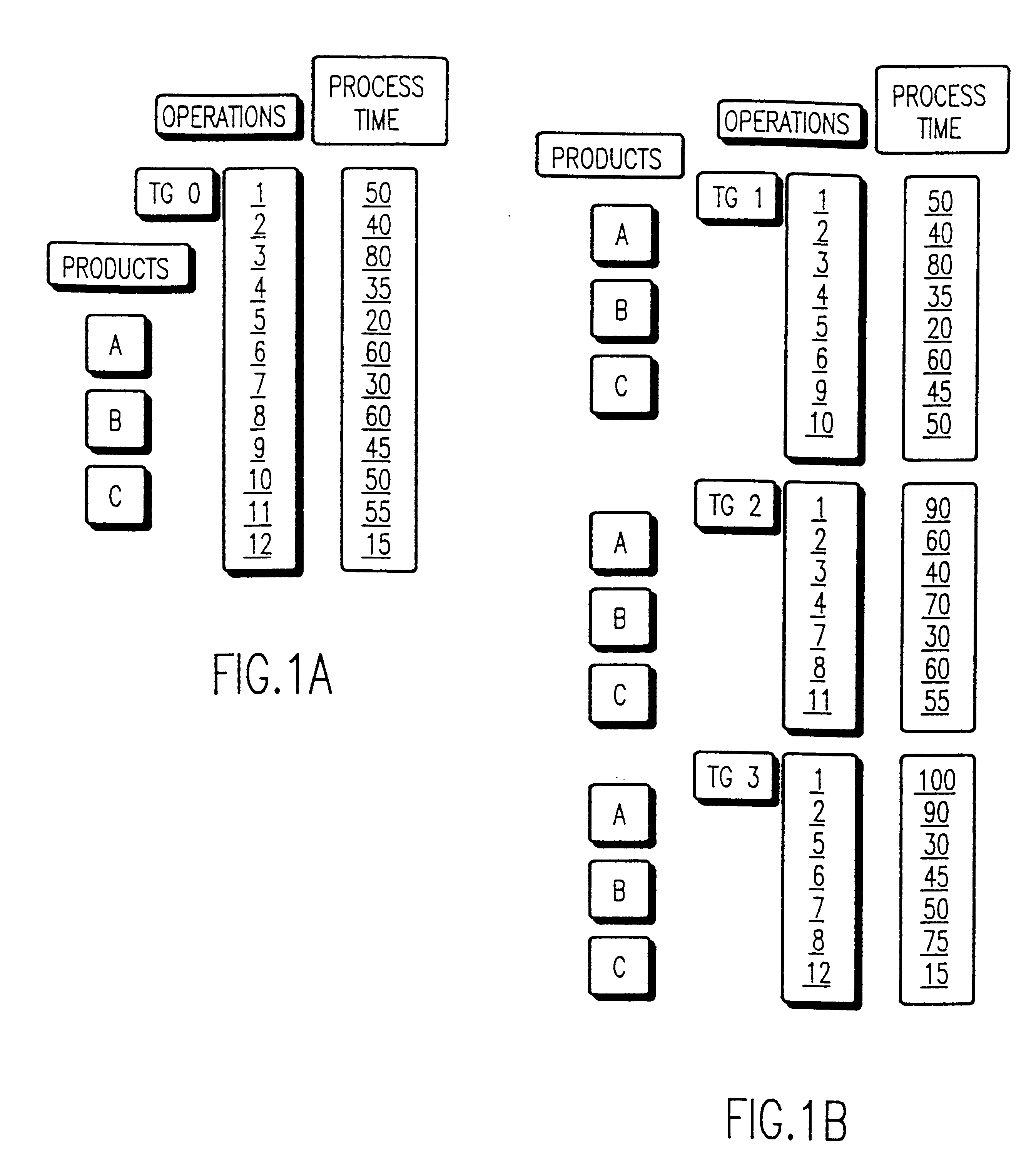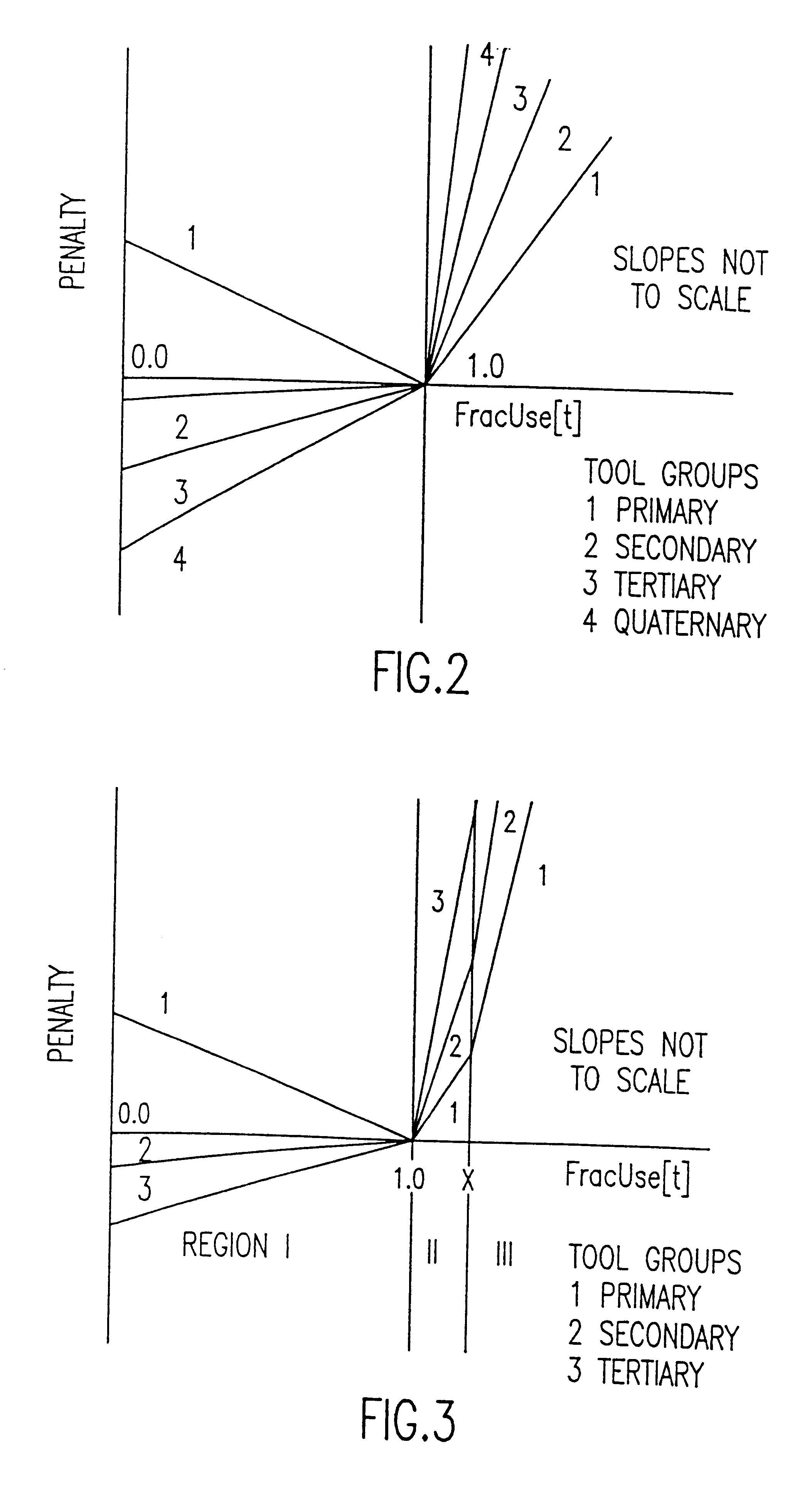Method of allocating work in capacity planning
a technology of capacity planning and allocation of work, applied in the field of capacity planning, can solve the problems of large capital investment and depreciation burden of tool set, less reliable tool, and older, and achieve the effects of reducing the number of tools, and reducing the number of resources
- Summary
- Abstract
- Description
- Claims
- Application Information
AI Technical Summary
Problems solved by technology
Method used
Image
Examples
example a
demonstrates the case where additional work can be accommodated on the secondary and tertiary tool groups. The primary tool group, nominally at 100% of capacity, is sitting at the beginning of region II with FracUse=1.000. In example B, the primary tool group has been forced to move up to the upper end of region II (FracUse=1.001) because the lower ranked tool groups can not take further work. The primary tool group is gating. Example C illustrates the case last described in the paragraph above; i.e., the primary tool group not gating, but the secondary tool group is gating. Case D is described below.
For the case of a non-primary tool group, it is not sufficient that it merely exhibit a FracUse value of 1.001 to qualify as a gating tool group and thus one which should have its number increased. The primary may also have a FracUse of 1.001 indicating the entire cascade set is gating. Additional work could be accommodated on either tool group. In such a case, one would ordinarily want...
PUM
 Login to View More
Login to View More Abstract
Description
Claims
Application Information
 Login to View More
Login to View More - R&D
- Intellectual Property
- Life Sciences
- Materials
- Tech Scout
- Unparalleled Data Quality
- Higher Quality Content
- 60% Fewer Hallucinations
Browse by: Latest US Patents, China's latest patents, Technical Efficacy Thesaurus, Application Domain, Technology Topic, Popular Technical Reports.
© 2025 PatSnap. All rights reserved.Legal|Privacy policy|Modern Slavery Act Transparency Statement|Sitemap|About US| Contact US: help@patsnap.com



